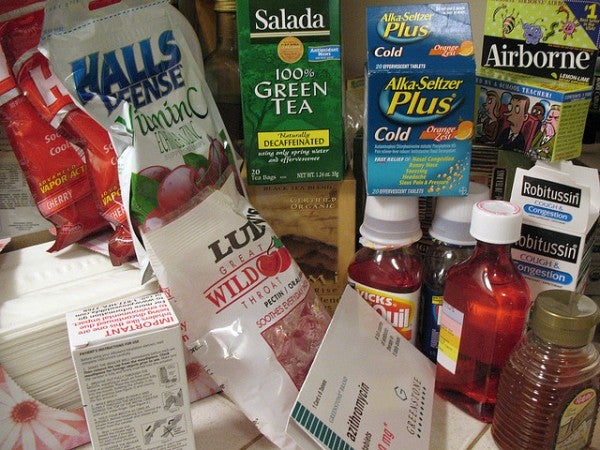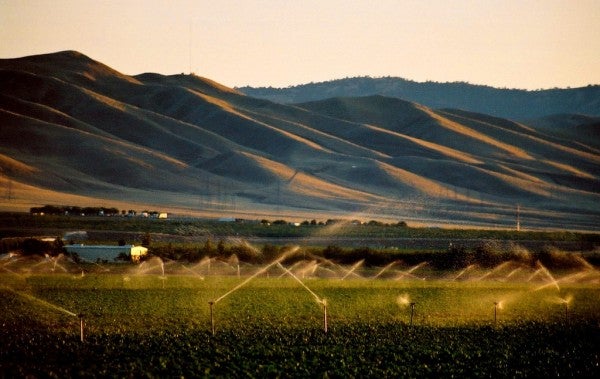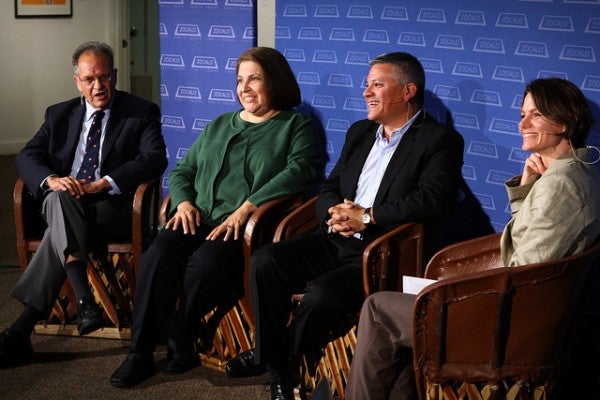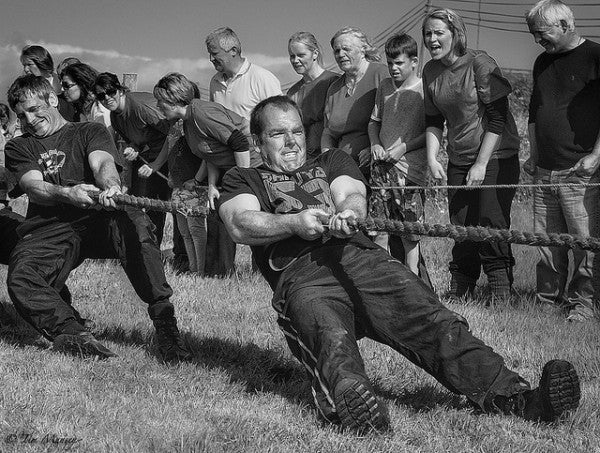
The Central Valley of California has some of the grimmest health statistics in the nation. It’s a leader in obesity, asthma, and premature births. Fixing those problems is important, but California is effectively broke. In advance of the Zócalo event in Fresno “Why is the Central Valley Sick?,” we asked several knowledgeable observers of the valley for their ideas of what do about this. What sort of things can improve the health of the Central Valley residents without increasing government spending?
Get some new priorities
 For decades direct regulations on polluters to protect public health have been given low priority, and emphasis has been placed on taxpayer-funded voluntary measures. Industry lobbyists and elected officials decry all mandates to reduce air pollution as “job-killers” but say nothing about the premature deaths of workers.
For decades direct regulations on polluters to protect public health have been given low priority, and emphasis has been placed on taxpayer-funded voluntary measures. Industry lobbyists and elected officials decry all mandates to reduce air pollution as “job-killers” but say nothing about the premature deaths of workers.
Inside the San Joaquin Valley, better priorities would lead to real controls being placed on the largest, fastest growing and least regulated source of pollution we have: mega-dairies and feedlots. Currently, raw sewage from cattle that is equivalent to the entire human population of the state–38 million people–is placed into open-air lagoons; the air stream becomes a waste stream leading directly to our lungs. In the southern San Joaquin Valley, coal is burned to create steam to lift oil out of the ground. The oily residue is also placed into uncovered ponds and allowed to evaporate into the air. Open flaring of gas in the oil fields is constant.
For outside impacts, the largest buildings in California are in the valley, home to warehouse distribution centers serving the entire West Coast. These “inland ports” are extensions of the coast’s major ports, and the accompanying truck traffic brings tons of toxic diesel exhaust into every community every hour. Another daily wave of semis brings urban waste into the valley for open air composting or burning in biomass plants that would not be allowed to operate in their cities of origin.
From a pre-term birthrate in Kern County 30 percent greater than the statewide average, to the permanent, hereditary genetic damage being done to kids in Fresno causing lower T-cell counts, we’re drowning in the data of an epidemic of human suffering, early death, and a disinterested political infrastructure.
Kevin Hall is director of the Central Valley Air Quality Coalition based in Fresno, online at www.calcleanair.org and on Facebook. Contact him at [email protected] or follow him on Twitter at SJVair.
————————————-
Make the drinking water non-dangerous
 Currently, hundreds of thousands of Central Valley residents do not have safe drinking water in their homes and schools. Most live in small communities and rely on increasingly contaminated wells. Some communities go a decade without safe water while they navigate bureaucratic funding programs in an effort to secure a safe and reliable drinking water source. Drinking water contaminants in the region have been linked to chronic illnesses from cancer to Parkinson’s disease to diabetes, as well as acute impacts such as gastrointestinal illness and Blue Baby Syndrome.
Currently, hundreds of thousands of Central Valley residents do not have safe drinking water in their homes and schools. Most live in small communities and rely on increasingly contaminated wells. Some communities go a decade without safe water while they navigate bureaucratic funding programs in an effort to secure a safe and reliable drinking water source. Drinking water contaminants in the region have been linked to chronic illnesses from cancer to Parkinson’s disease to diabetes, as well as acute impacts such as gastrointestinal illness and Blue Baby Syndrome.
California cannot address the health inequalities in the Central Valley without ensuring that everyone has access to safe and affordable drinking water. There is much that California can do to accomplish this goal without increasing government spending:
1. Protect drinking water sources. In particular, we must enact an effective regulatory program to protect groundwater from fertilizers and pesticides.
2. Prioritize safe drinking water.
3. Target and streamline existing funding programs to the areas that need it most. California has spent billions of dollars in voter-approved “Safe Drinking Water Bonds,” and virtually none of this funding has gone to Central Valley communities without safe drinking water. There are still many tens of millions of dollars in existing bond funding that could be directed toward solving the drinking water crisis in the valley.
4. Target technical assistance, funding, and enforcement programs to create regional drinking water solutions that reduce costs, increase local financial and technical resources, and improve reliability for local drinking water systems.
5. Engage local communities in decision-making processes to ensure that those that are most affected have a say in the decisions. We cannot have a healthy region without empowering a strong community voice to develop, implement, and sustain solutions that address the needs of local communities.
Laurel Firestone co-founded and co-directs the Community Water Center (CWC), a non-profit environmental justice organization located in Visalia, California. She also serves on the Tulare County Water Commission.
————————————-
Match resources to the level of need
 It is increasingly recognized that social equity is a superior growth model and that regions that are more equitable grow faster. Therefore, a powerful way to improve health in California’s Central Valley is to focus resources to grow opportunity in the places that need it most.
It is increasingly recognized that social equity is a superior growth model and that regions that are more equitable grow faster. Therefore, a powerful way to improve health in California’s Central Valley is to focus resources to grow opportunity in the places that need it most.
A new study by the UC Davis Center for Regional Change has identified the communities that are beset by high levels of cumulative environmental hazards, high levels of social vulnerability, and poor health in the region. This study found that over one million San Joaquin Valley residents live in areas that can be considered Cumulative Environmental Vulnerability Action Zones (CEVAZ). These are the areas that should receive prioritized resources, including funding for environmental protection and health promotion, public engagement, and economic investments in green and clean industries.
Investing successfully in these CEVAZ will require a reinvention of government, in which public agencies break out of siloes to collaborate across issues and jurisdictions. It will require reinvigorated and mutually-respectful partnerships between public agencies and the people and places that are most at risk. These partnerships must draw on the unique knowledge of community members about the risks and opportunities they face. And it will require that the best available science on remedies for cumulative health impacts be translated from theory to practice.
Jonathan London is assistant professor in the department of Human Ecology at UC Davis and is director at the Center for Regional Change.
————————————-
Get people access to the food they produce
 The San Joaquín Valley produces the milk, grapes, and almonds that nourish the nation. But the region’s agricultural bounty is not reaching the area’s low income residents. If these Valley residents continue to lack access to healthy foods and environments, serious health disparities will persist.
The San Joaquín Valley produces the milk, grapes, and almonds that nourish the nation. But the region’s agricultural bounty is not reaching the area’s low income residents. If these Valley residents continue to lack access to healthy foods and environments, serious health disparities will persist.
Consider these health statistics: California’s 18th and 20th Congressional Districts–which include most of the San Joaquín Valley–had the highest levels of food hardship from 2010 to 2011, according to the Food Research and Action Center. Among residents of the Valley–where five counties are majority Latino–about 65 percent of adults are overweight or obese, according to the 2009 California Health Interview Survey.
Not only does much of the local produce not reach Valley residents: their environments are also impacted by agriculture. An estimated 254,000 people in the southern San Joaquín and Salinas valleys are at risk of nitrate contamination of their drinking water, according to a 2012 University of California, Davis report. More than 90 percent of that nitrate pollution is connected to cropland, it said. Because of this, many people can not drink their tap water. Some have also been exposed to pesticides, in a region with some of the worst air quality in the country.
The prescription to improve the health of the San Joaquín Valley must begin with the area’s greatest asset: agriculture. I have covered great initiatives intended to make locally grown produce more accessible–including school farm stands, flea markets that accept EBT for produce, conversions of neighborhood liquor stores into corner stores featuring fresh produce, and the development of school gardens, where families can grow the products they are culturally accustomed to.
These efforts require little government funding, yet could improve the health of San Joaquín Valley residents. There is also an opportunity for innovative collaboration between the agriculture industry and health organizations.
The health of an abundant region is on the line.
Rebecca Plevin is the community health reporter for Vida en el Valle, the McClatchy Company’s bilingual newspaper in California’s San Joaquín Valley. Read her community health blog, Harvesting Health.
*Photo courtesy of DonnaGrayson.







